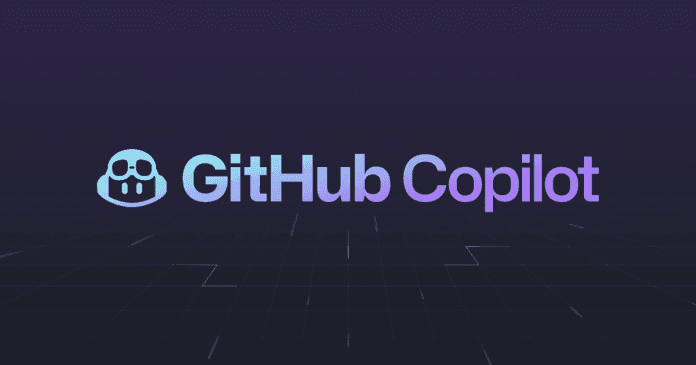AI-Assisted Coding: Tools, Mechanisms, Benefits, and Future Trends
AI-assisted coding has rapidly transformed the software development process, providing tools and techniques that accelerate coding, improve accuracy, and enhance developer productivity. Leveraging advanced algorithms, AI systems in coding not only assist with code completion but also help in error detection, automated testing, and even translating user requirements into code. This has made AI a valuable asset for developers and teams, reshaping the coding landscape and opening up new possibilities in the industry. Here, we explore the main tools, mechanisms, benefits, and trends in AI-assisted coding.
Tools for AI-Assisted Coding
Several tools have emerged that incorporate AI to assist developers at various stages of coding. The most popular among these are:

- GitHub Copilot: Powered by OpenAI’s Codex model, Copilot offers suggestions as developers type, completing lines of code, entire functions, or even complex blocks based on context. It supports multiple languages and is widely adopted by developers as it integrates directly with major IDEs like Visual Studio Code.
- Tabnine: An AI-powered code completion tool, Tabnine supports many programming languages and IDEs, using machine learning to suggest code completions. It can be trained on a specific codebase, making it suitable for enterprise environments where consistency with existing code is essential.
- CodeT5 and Codex: Developed as advanced language models for code, CodeT5 by Salesforce and Codex by OpenAI are capable of code generation, completion, and transformation. They are widely used as engines behind code-assistive tools, providing syntax and function suggestions based on deep learning.
- Kite: Another code completion tool that uses machine learning, Kite works locally to help with Python and JavaScript, suggesting autocompletions and helping reduce syntax errors. While limited to specific languages, it’s popular for its lightweight design and ease of use.
- DeepCode: Acquired by Snyk, DeepCode uses machine learning to review code, detecting security vulnerabilities and quality issues. It assists developers in identifying and remediating potential issues during the coding process, enhancing security and robustness.
Mechanisms Behind AI-Assisted Coding

The mechanisms behind AI-assisted coding tools involve advanced machine learning models, specifically those in natural language processing (NLP) and deep learning. The primary mechanisms include:
- Natural Language Processing (NLP): NLP techniques enable AI to understand and generate code in a way that is analogous to how it processes human language. Models trained on large datasets of code can suggest syntactically and semantically correct completions.
- Transformers: Many AI coding tools rely on transformer-based models, such as GPT and T5 architectures, which excel at language generation. These models, trained on vast code repositories, help predict the next line or function, contextualize suggestions, and provide relevant code snippets.
- Reinforcement Learning and Fine-Tuning: AI models can be fine-tuned on specific codebases or through feedback from developers to improve the relevance and accuracy of their suggestions. Reinforcement learning allows these systems to adapt to individual user preferences over time, improving accuracy.
- Error Detection and Corrective Feedback: Some AI systems are equipped to detect syntax errors, logical bugs, and potential security vulnerabilities. By analyzing code context and matching patterns with known best practices, these tools can provide corrective feedback or even fix issues autonomously.
- Pattern Recognition: By learning from common coding patterns and practices across large datasets, AI models can recognize standard coding patterns, such as data handling or algorithmic solutions, and replicate them. This helps improve code quality by suggesting commonly accepted coding practices.
Benefits of AI-Assisted Coding

- Boosted Productivity: AI-assisted coding can save time by automating repetitive tasks and providing real-time code suggestions. It can significantly shorten development cycles, allowing developers to focus more on design and problem-solving rather than syntax and boilerplate coding.
- Reduced Errors: AI-powered tools can flag errors and vulnerabilities before they reach production, saving developers time and effort. This preemptive error correction helps prevent bugs and reduces the need for extensive debugging later on.
- Enhanced Learning and Knowledge Transfer: For less experienced developers, AI-assisted coding tools serve as on-the-job training resources. By suggesting best practices and correcting common errors, these tools can accelerate the learning curve for new developers or those working in unfamiliar languages.
- Consistency and Quality Assurance: AI tools help maintain coding standards across large teams by suggesting consistent code patterns and styles. This leads to more maintainable codebases and reduces the chance of inconsistencies that can cause issues down the line.
- Improved Collaboration: AI-assisted tools often integrate with collaborative platforms, helping teams stay in sync with real-time feedback on code quality. This enables continuous code improvement and supports agile development by making code reviews faster and more effective.
Challenges and Considerations
While AI-assisted coding offers numerous benefits, there are also significant challenges:
- Limited Contextual Understanding: Despite advancements, AI models may lack a deep understanding of the context, especially for complex projects. This can result in suggestions that don’t align with project-specific requirements, requiring developer oversight.
- Security and Privacy Concerns: AI models trained on public code repositories may inadvertently introduce insecure practices into private codebases. Additionally, there are concerns around using proprietary or sensitive data in these AI tools, necessitating careful security protocols.
- Potential Skill Decline: Over-reliance on AI tools might lead to skill atrophy among developers, who may come to rely on suggestions instead of critically thinking through code structures and logic.
- Intellectual Property Issues: The use of open-source datasets in training these models has raised legal questions about the ownership of generated code. As AI tools become more prevalent, clearer guidelines on intellectual property rights will be essential.
Future Trends in AI-Assisted Coding
- Greater Context Awareness: Future AI models are expected to incorporate more context-aware mechanisms, improving their ability to understand the developer’s intentions, architectural constraints, and domain-specific requirements. This could lead to more relevant and sophisticated code suggestions.
- AI-Enhanced Testing and Debugging: Beyond code completion, AI will play a larger role in automated testing and debugging. New tools will likely be developed to detect complex logic errors and automatically create test cases, ensuring code robustness and reliability.
- Hybrid AI-Developer Collaboration Platforms: Emerging tools will create collaborative environments where developers and AI systems work side by side, refining code together in real time. This collaborative model will allow AI to handle routine coding tasks while developers focus on higher-level decision-making.
- AI-Driven Code Refactoring and Optimization: Future AI tools will likely offer more sophisticated refactoring and optimization suggestions, enabling developers to improve code efficiency. These tools may analyze code performance and recommend adjustments that improve runtime and resource efficiency.
- Domain-Specific AI Models: As AI-assisted coding matures, models trained on domain-specific code, such as finance, healthcare, or robotics, will emerge. These specialized tools will enhance the relevance and applicability of AI-assisted coding, addressing the unique needs and standards of various industries.
- Integration with Low-Code/No-Code Platforms: The rise of low-code and no-code platforms is making software development more accessible to non-programmers. AI-assisted coding tools will further enable these platforms to handle more complex logic, allowing a broader audience to develop software solutions without deep technical expertise.
RELATED ARTICLE
Conclusion
AI-assisted coding represents a significant leap forward in the evolution of programming. By combining AI’s pattern recognition and predictive capabilities with human creativity and problem-solving, the future of coding may become a highly collaborative effort between humans and intelligent machines. AI tools are not only making coding more efficient but are also reshaping the skill sets required to develop software. While challenges remain, the future of AI in coding holds exciting possibilities that could make software development faster, safer, and more accessible than ever before.
